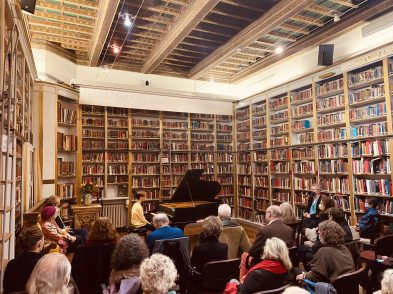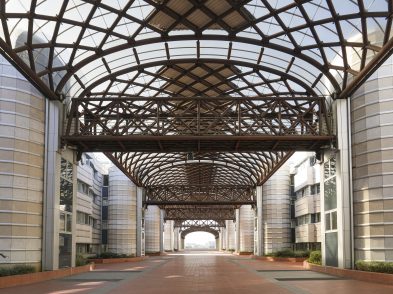There is gentleness in the air as you walk along the lungarno, mesmerized by the reflection of the Uffizi and her neighbors in the storied river below. You stop for just a moment and take in the city, the breeze gently wisping through your hair, and you don’t even mind the newly arrived tourists yattering as the conglomeration of languages create a strange chirping all of its own. You never really mind the travelers anyway because, in all honesty, you are one yourself, even if you have made the Renaissance city your home. The sounds of gelato paddles clicking against the metal canisters that hold the whipped elixir alert to the imminent summer, as you turn right onto the Ponte Vecchio and saunter through the village floating above the river. In a stunning instant, you realize you are following in the footsteps of what other people have been doing for almost a thousand years and, in some cases, more. You wander to the center of the bridge, look up and down the peaceful waterway, and are certain you have landed in a dream.
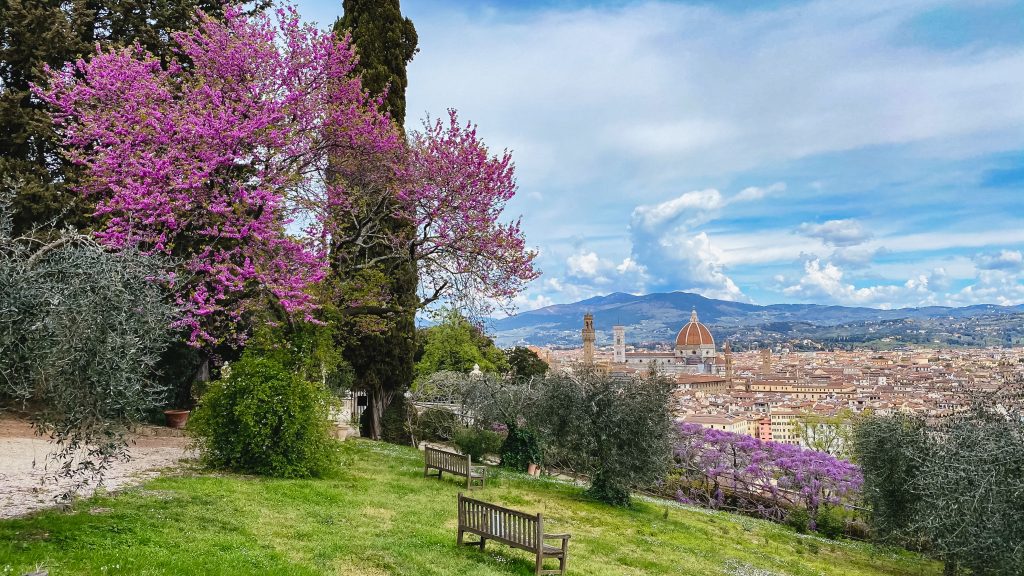
You might often have been asked, “You moved to Florence? Why Florence?” The answer delivered with a bit of a baffled look is generally, “because it’s Florence!” Suddenly you are overtaken by the feeling of the flowers and greenery, whether it be the Boboli Gardens, a park on the viale dei Colli, the ancient trees and annual spring flora standing guard, reminding you that they have been here almost forever and that you are only passing through for but a brief spell. In piazzale Michelangelo you stand alongside the bronze David, a copy of the original, and for a moment you too stand guard over the city of which you feel oddly protective. From David’s vantage point you take in a thousand years of art and culture, nature and beauty, the likes of which you cannot really believe you are lucky enough to experience. You gently run your fingers over the skyline—the Palazzo Vecchio, the Duomo and so much more—and without as much as a brush or oil paints, you create a canvas deftly painted forever in your mind. It is a feeling and an image you take wherever you go, and whenever you are confronted with the realities of a harsher world, and you remember the question and your answer: “Why Florence? Because it’s Florence.”
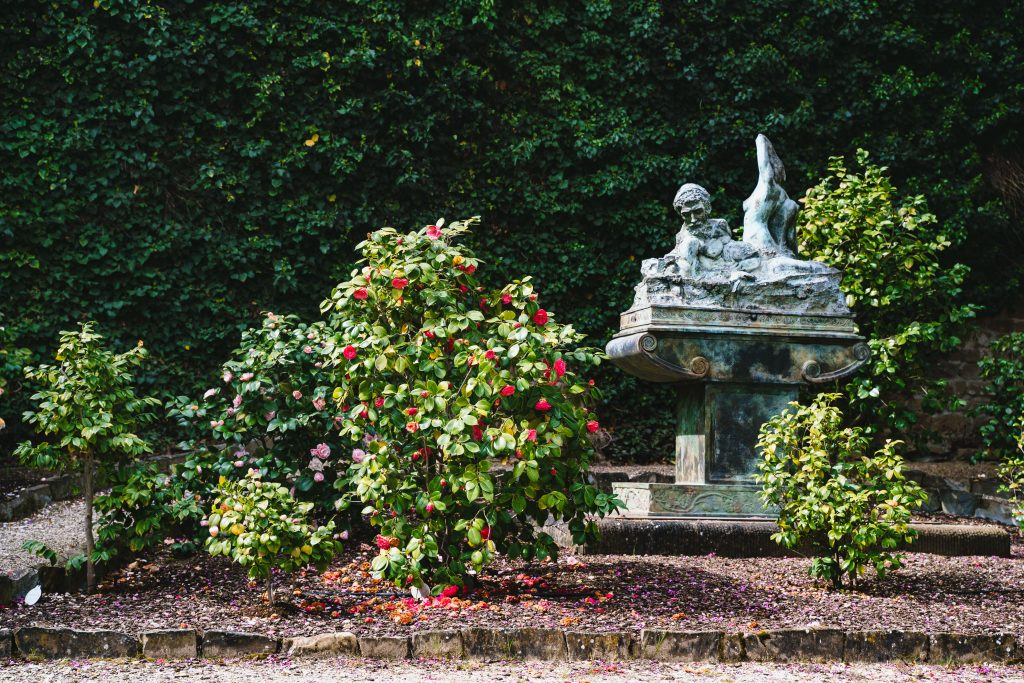
February and March can be somewhat harsh in Florence, a blanket of grey covering the city, a dampness that can chill the bone, rain, but is it really ever that harsh? No, because spring is etched into your soul from seasons previous. Florence always reminds you of her best qualities. And then, winter is over and you find yourself once again in the grand piazza della Signoria, and even though there are hundreds of people gesticulating, explaining and pronouncing at the top of their lungs, you feel at one with your surroundings: the glorious palazzi, Loggia dei Lanzi, Neptune and Mr. Medici on his horse, each and every one like old friends who greet you. Even more jammed with humanity is the piazza del Duomo with its beautiful Baptistery, and yet as you stare up at these overpowering edifices, you feel a kinship with them. You recognize them from some previous life as if you have known them forever, such is the strange effect of Florence, especially beneath the blue skies and soft breeze of spring.
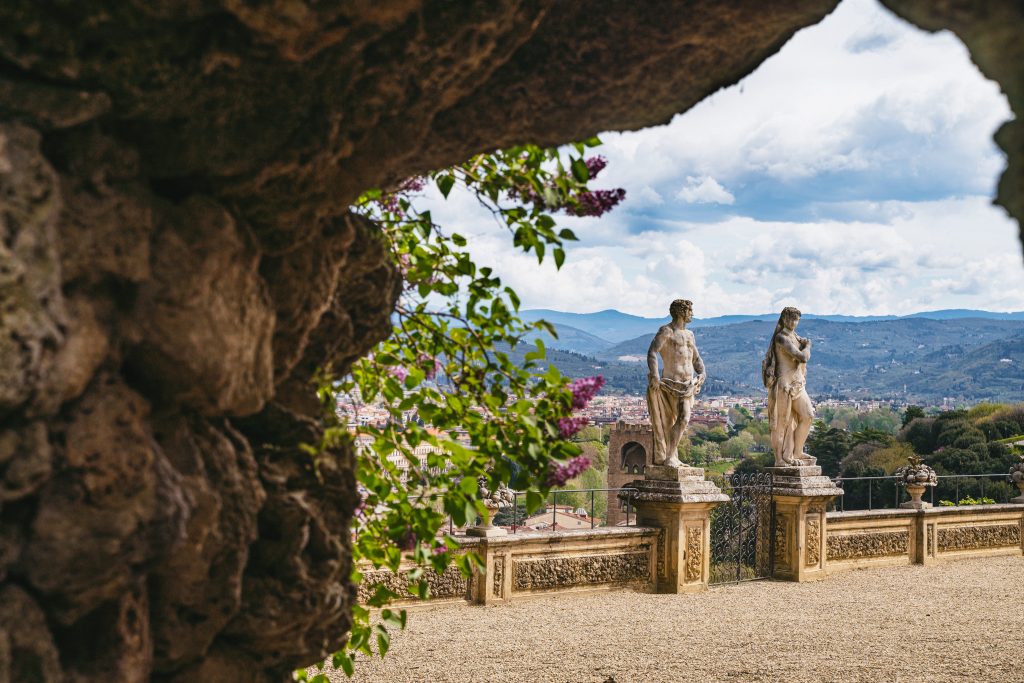
Throughout the nooks and crannies of the eternal city, there are stone plaques with quotes signed “Dante”, and you have the sense that the inventor of the poetic Italian language we speak today stands among us, observing our every move, reminding us not of a world long gone, but of a world still very much present. First, we picture the red-cloaked scribe on his stone facing the Duomo, a stone said to be on the same spot where he composed his words 800 years ago, and then by Ponte Santa Trinita, seeing his Beatrice, the great love of his life, untouchable in her purity, for the first time. We wonder if she really existed or was simply a poetic figment of his imagination until we enter Dante’s church, a humble 12th-century structure on a narrow side street, and learn that Beatrice is believed to be buried there as passersby leave notes, yearning for pure love. Or perhaps she is in her family tomb in Santa Croce, where Beatrice’s family surname Portinari is etched into a black and white mosaic to the right of the main altar, nestled among nobles and the religious.
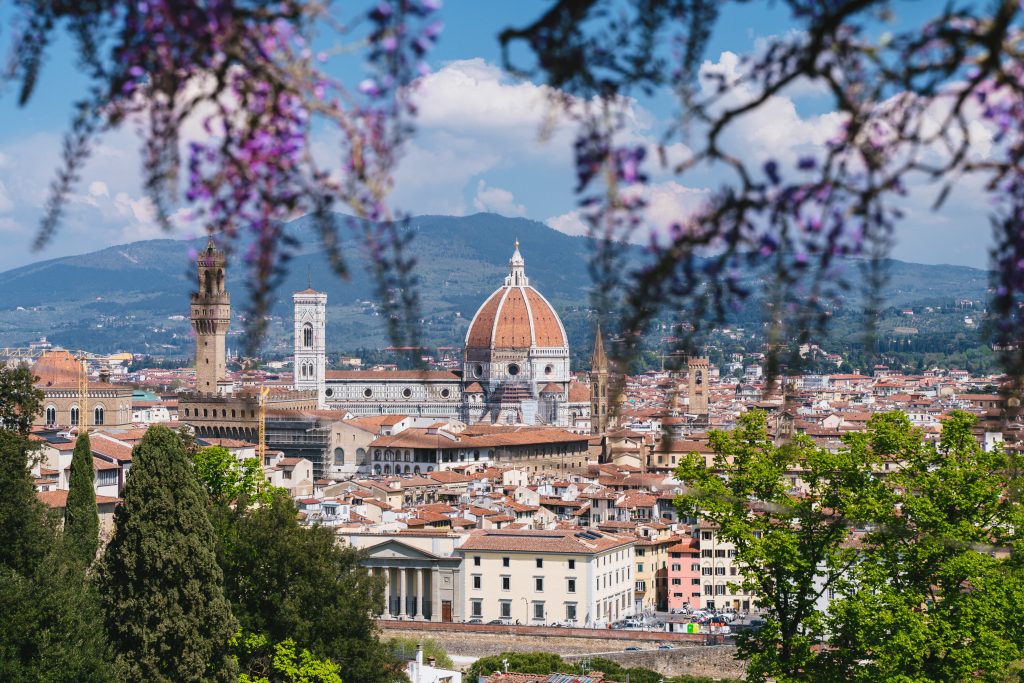
As you make your way out of the basilica and into the piazza, that large marble Dante looms over you. You look up at him and wonder, “Why such a dour face? Look at your city! It’s spring!” (Then you remember that he didn’t quite get on with the local powers-that-were, was exiled, and never saw his city again, dying in Ravenna and being interred there, and not in the tomb you just visited in Santa Croce.) You make out the rolling hills that form a backdrop for the entire city, the spring sun glazes the edges of the buildings, and you wish to remain there in that very moment forever.
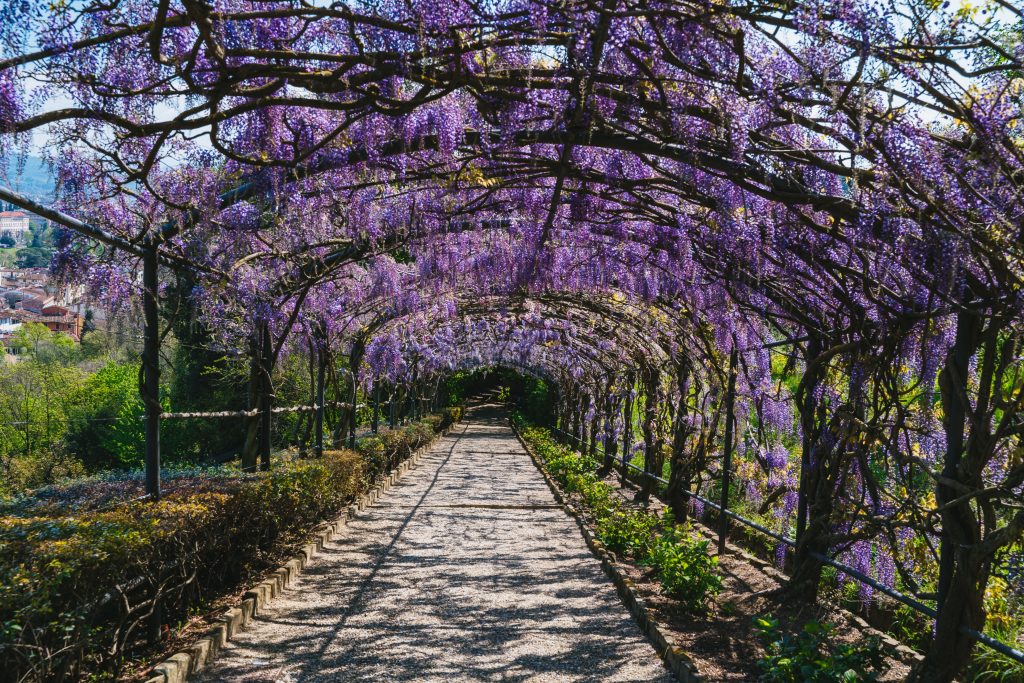
At some point, as you pass wisteria blossoms and you realize how deeply, madly and wildly in love you are with your city. Sure, you love it all year round, in the fall when it takes on a golden hue, in the winter in the necessary rain, and in the summer, even when the world descends upon it, but above all in the spring, when the possibilities are endless and you discover the city anew embedded in your soul.


